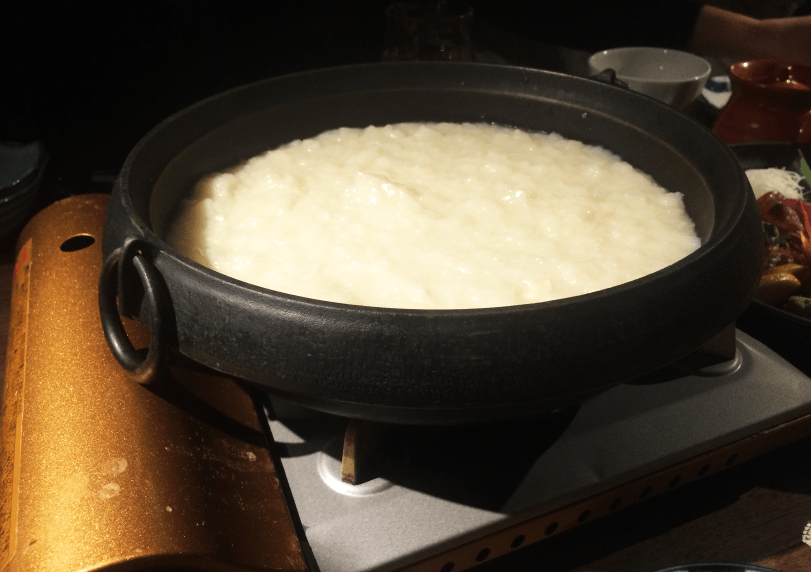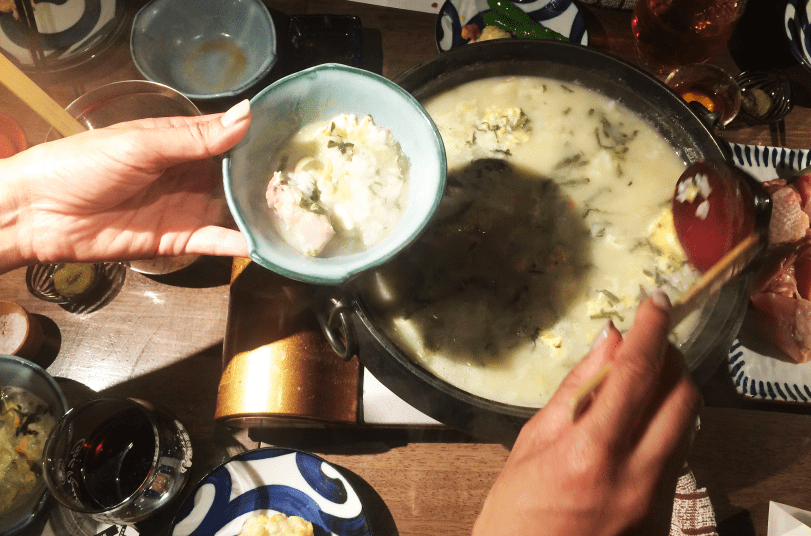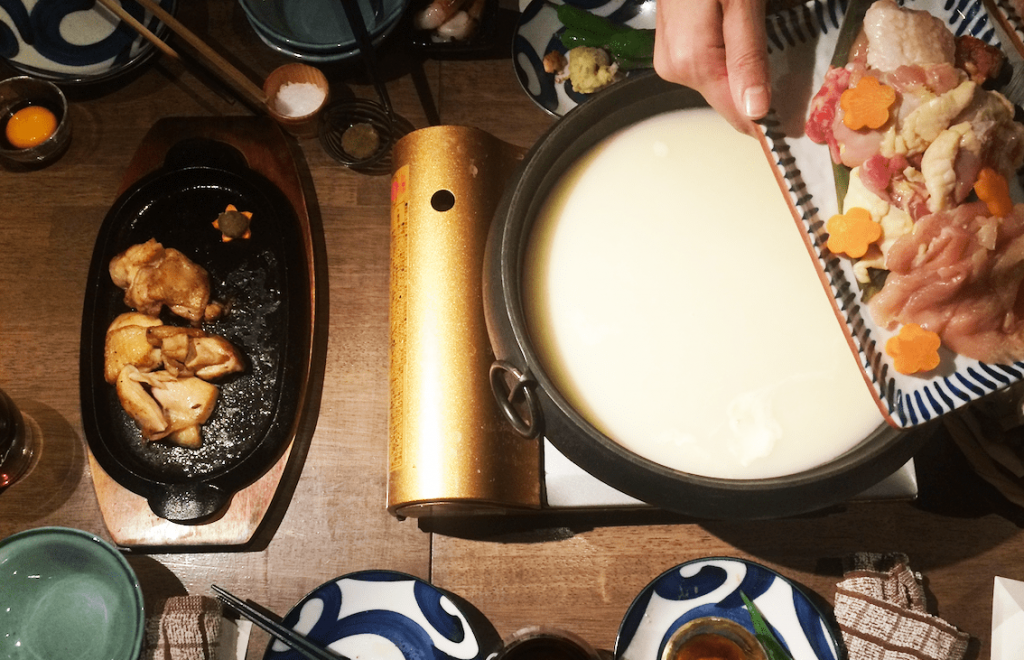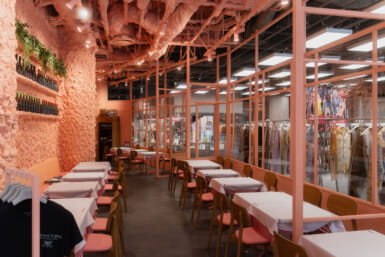Four steps to getting the most out of a meal of chicken – cooked in collagen.
You’ve surely heard about the benefits of eating collagen – it’s reportedly good for skin, hair, nails, joints, and even digestion. But have you actually tried sipping on a steaming bowl of the thick, creamy white protein? Kashiwaki restaurant in Kanda specializes in chicken – in fact, you can eat some of Japan’s best quality bird here – and so naturally their menu features collagen nabe (hotpot).
Weekender recently went along to try it out, and we came away not only with glowing skin (well, the waiter told us so), but also with some handy tips for those of you who might be braving the dish for the first time. Aside from the four steps listed below, here’s a bonus tip for those with more unadventurous palates – just add salt.

Step 1: Drink a bowl of the soup
Once we were settled around the table in one of Kashiwaki’s cozy private dining rooms, right at the top of a narrow staircase, we ordered a few starter yakitori dishes. This is a good way to warm up to the main course of collagen nabe, which arrived in a big round pot and looked more like porridge than soup. Once the heat was turned up, however, the collagen simmered its way to form a smooth, milky liquid. Add a few chicken pieces to the pot, and while these are cooking, dive in and pour yourself a bowl of collagen to drink. The taste is fairly mild, although at the same time we found it to be quite rich and creamy. (Remember … just add salt.)
Step 2: Eat the Chicken with Ponzu Sauce
Pour some ponzu sauce into a small bowl and, once the chicken is cooked, place a couple of portions into the bowl. Ponzu is citrus-based and looks like soy sauce but it’s far more tart and sharp in taste. It brings a welcome balance in flavor after the collagen soup.
Step 3: Cook Some Veg in the Hotpot
Next, add a variety of fresh vegetables to the hotpot, and let them simmer gently in the collagen, which by now has taken on a subtle chicken flavor. Pace yourself, as the soup is getting richer by the minute, and there’s still a hefty final portion to get through…

Step 4: Turn the Nabe into Ramen
For the last phase of our meal, we were served a sizable bowl of noodles, which we added to the collagen soup, essentially turning it a big pot of collagen ramen. If you are dining with a big party and have ordered two nabe pots, we recommend mixing things up and ordering rice for the second pot.
For Kashiwaki map and contact details, click here.
Want to see more? Watch our step-by-step video:









